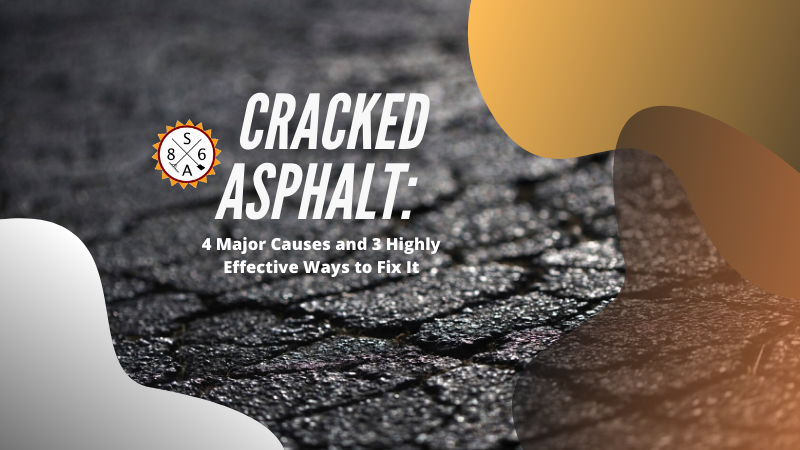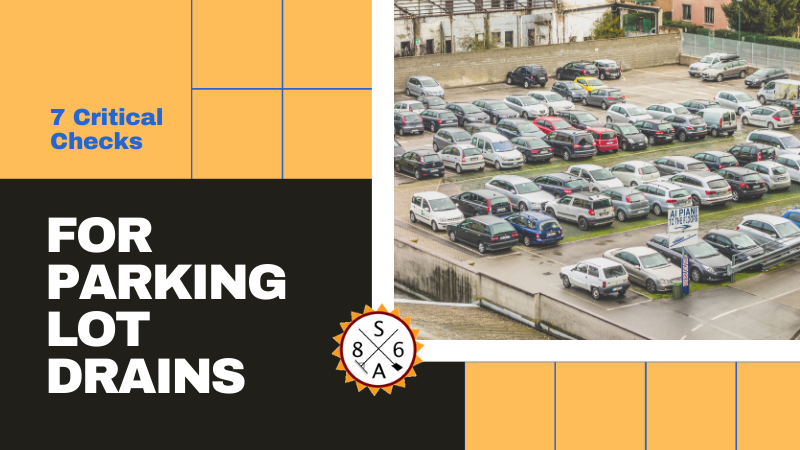
Cracked Asphalt: 4 Major Causes and 3 Highly Effective Ways to Fix It
It is important for everyone to keep their driveways, parking lots, and other asphalt surfaces in good condition. This will help the property maintain its value, which is important for every real estate investment. As asphalt ages, it may start to crack. It requires regular maintenance in order to extend its longevity. With this in mind, there are a few major reasons why asphalt might start to crack. The good news is that there are also ways to fix it.
The Major Causes of Asphalt Cracking
If there is cracked asphalt, it needs to be fixed quickly. Otherwise, this will only lead to bigger problems down the road, which will cost more money. There are a few major reasons why asphalt might start to crack. They include:
- Exposure to UV Rays: One of the biggest reasons why asphalt starts to crack is exposure to UV rays. These rays come from the sun and dry out the oil, bitumen, and tar, which are all key parts of asphalt. If asphalt becomes dry, it cannot flex and extend with the ground. This leads to cracking.
- Plants: If the asphalt starts to crack, this could lead to vegetation that grows through the cracks. If plants are growing, this means that there is water that has gotten underneath the asphalt, leading to plant growth. These plants can spread quickly, leading to additional damage. It is important to remove them quickly and fill the cracks.
- Water: Along these lines, moisture is one of the major reasons why asphalt starts to deteriorate. As water gets into the asphalt, it damages the foundation. This leads to major depressions and an uneven surface. This is where potholes come from. This is why it is important to make sure that all asphalt surfaces drain well.
- Chemicals: Finally, oil and chemical spills that come from vehicles can also lead to asphalt damage. This can discolor the asphalt, making it look dirty. Furthermore, they can also penetrate the asphalt itself, leading to major damage.
All of these issues are common sources of asphalt damage. Fortunately, there are also a few ways to repair asphalt quickly.
Effective Asphalt Repair Methods
There are a few reliable ways in which someone can repair cracked asphalt. Some of the most popular asphalt repair methods include:
- The Gator Patch: One option that people might use is called a gator patch. This is a popular option for those who have a large network of cracks. These cracks look like the back of an alligator (which is where the name comes from). A gator patch is like clay or mud. It will require a trowel but is an effective fix.
- Cold Pour: This is good for smaller cracks that are less than a half-inch in diameter. This is made from acrylic and water. It usually comes in liquid form and is poured by hand.
- Hot Pour: For larger cracks (in parking lots and on runways), a hot pour solution is usually required. This is based on rubber, is shaped like a cube, and requires a melter applicator. Once it is melted, it is dragged over the crack and filled. This is the preference of the professionals.
It is better to prevent asphalt cracks from appearing with proper maintenance; however, these effective techniques can be used to quickly repair asphalt damage.
It is important for everyone to keep their driveways, parking lots, and other asphalt surfaces in good condition. This will help the property maintain its value, which is important for every real estate investment. As asphalt ages, it may start to crack. It requires regular maintenance in order to extend its longevity. With this in mind, there are a few major reasons why asphalt might start to crack. The good news is that there are also ways to fix it.
The Major Causes of Asphalt Cracking
If there is cracked asphalt, it needs to be fixed quickly. Otherwise, this will only lead to bigger problems down the road, which will cost more money. There are a few major reasons why asphalt might start to crack. They include:
- Exposure to UV Rays: One of the biggest reasons why asphalt starts to crack is exposure to UV rays. These rays come from the sun and dry out the oil, bitumen, and tar, which are all key parts of asphalt. If asphalt becomes dry, it cannot flex and extend with the ground. This leads to cracking.
- Plants: If the asphalt starts to crack, this could lead to vegetation that grows through the cracks. If plants are growing, this means that there is water that has gotten underneath the asphalt, leading to plant growth. These plants can spread quickly, leading to additional damage. It is important to remove them quickly and fill the cracks.
- Water: Along these lines, moisture is one of the major reasons why asphalt starts to deteriorate. As water gets into the asphalt, it damages the foundation. This leads to major depressions and an uneven surface. This is where potholes come from. This is why it is important to make sure that all asphalt surfaces drain well.
- Chemicals: Finally, oil and chemical spills that come from vehicles can also lead to asphalt damage. This can discolor the asphalt, making it look dirty. Furthermore, they can also penetrate the asphalt itself, leading to major damage.
All of these issues are common sources of asphalt damage. Fortunately, there are also a few ways to repair asphalt quickly.
Effective Asphalt Repair Methods
There are a few reliable ways in which someone can repair cracked asphalt. Some of the most popular asphalt repair methods include:
- The Gator Patch: One option that people might use is called a gator patch. This is a popular option for those who have a large network of cracks. These cracks look like the back of an alligator (which is where the name comes from). A gator patch is like clay or mud. It will require a trowel but is an effective fix.
- Cold Pour: This is good for smaller cracks that are less than a half-inch in diameter. This is made from acrylic and water. It usually comes in liquid form and is poured by hand.
- Hot Pour: For larger cracks (in parking lots and on runways), a hot pour solution is usually required. This is based on rubber, is shaped like a cube, and requires a melter applicator. Once it is melted, it is dragged over the crack and filled. This is the preference of the professionals.
It is better to prevent asphalt cracks from appearing with proper maintenance; however, these effective techniques can be used to quickly repair asphalt damage.

